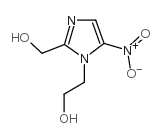| 结构式 | 名称/CAS号 | 全部文献 |
|---|---|---|
 |
羟基甲硝唑
CAS:4812-40-2 |
|
 |
2-(2-甲基-5-硝基-1H-咪唑-1-基)乙酸
CAS:1010-93-1 |